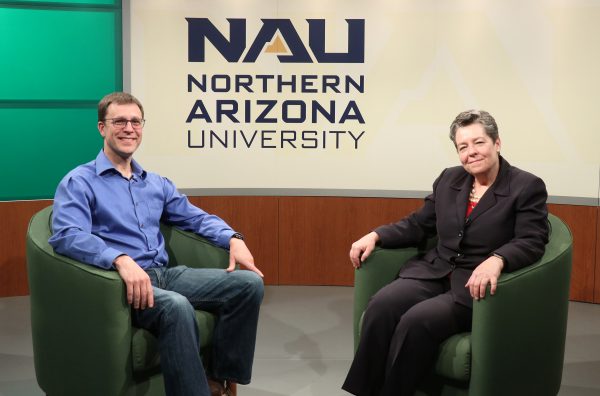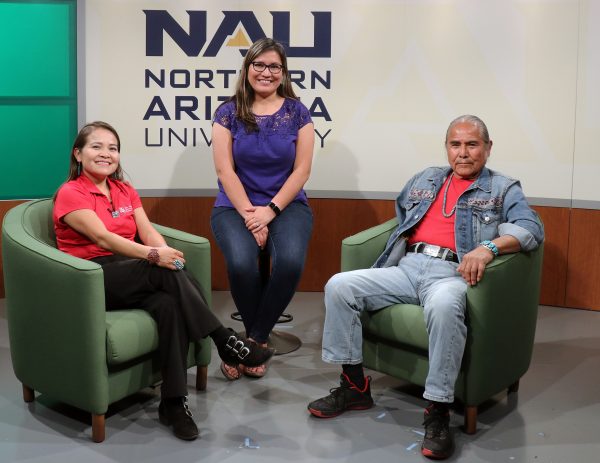When Northern Arizona University researchers successfully partner with a community organization, their experience can inform other emerging community partnerships.
The Southwest Health Equity Research Collaborative (SHERC) created a video series titled “Stories of Community-Engaged Research” that features four community-university partnerships, each in its own five-part video.
“The purpose of the video series is to allow community and research partners to talk about the development, successes and challenges of their relationship.”,” said Nicolette Teufel-Shone, associate director of CHER, co-lead of the SHERC Community Engagement Core and a professor in the Northern Arizona University Department of Health Sciences.
The video series features four partnerships: Karletta Chief and Duane “Chili” Yazzie, Amy Armstrong-Heimsoth and Shevaun Sullivan, Talima Pearson and Trudie Milner, and Frank von Hippel and Emma Torres.
Following are the series descriptions:
Series 1: “Tó Łitso The Water is Yellow: Water contamination in Navajo Nation”
Chief, assistant professor and extension specialist in the Department of Soil, Water, and Environmental Sciences at the University of Arizona, partnered with Yazzie, president of Shiprock Chapter on the Navajo Nation.
In their conversation, they discussed their collaboration on studying the 2015 Gold King Mine spill and its impacts on Navajo communities along the San Juan River in New Mexico and Utah.

Series 2: “Improving the transition experience of youth out of the foster care system in Phoenix, Arizona”
Armstrong-Heimsoth, clinical assistant professor in the NAU Department of Occupational Therapy at Northern Arizona University partnered with Sullivan, director of Group Home Relations at a non-profit called Opportunity, Community & Justice for Kids (OCJ Kids).
These partners discussed their community-engaged research project focused on improving the transition experience of youth in foster care as they turn 18 and leave the foster care system. OCJ Kids serves youth in the foster care system, providing them education and resources to help them be successful in adulthood.

Series 3: “Understanding the Spread of Staphylococcus aureus in the Yuma, Arizona region”
Pearson, research professor in the NAU Department of Biological Sciences, partnered with Milner, vice president of operations at Yuma Regional Medical Center, a large not-for-profit hospital, located in the southwest corner of the Arizona, bordering California and Mexico.
This partners discussed their community-engaged research project focused on understanding the spread of Staphylococcus aureus among the diverse populations of Yuma, Arizona. Staphylococcus aureus is a species of bacteria on our bodies that approximately 30% of humans carry. Though it doesn’t usually cause disease, this bacterium is a common cause of skin, soft-tissue, bone, joint, respiratory and endovascular infections and can result in life-threatening disorders.

Series 4: “Health Impacts of Environmental Contaminants in the Yuma, Arizona region”
Von Hippel, professor in the NAU Department of Biological Sciences, partnered with Torres, chief executive officer for Campesinos Sin Fronteras.
These partners discussed their community-engaged research project focused on health impacts of environmental contaminants in the Yuma, AZ region. Since its inception in 1999, the goal of Campesinos Sin Fronteras has been to improve the quality of life of farm workers and their families. As pioneers of the “Promotora” model (Community Lay Health Worker) in Arizona, they have helped to develop and implement the model throughout the country.
To view the series, you must first register. Registrants then have full access to the videos. There is a survey on the page that the faculty will use to develop future education projects. Visit the CEC website for more information on its programs.
Spring 2020
CHER/SHERC
Newsletter

